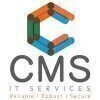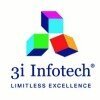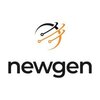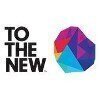
i
Filter interviews by
Quantiphi Analytics Solutions Private Limited Software Engineer Interview Questions and Answers
Quantiphi Analytics Solutions Private Limited Software Engineer Interview Experiences
7 interviews found
I applied via Campus Placement
4 sections Quantitative Analysis, Programming Based (output analysis, error detection), Aptitude and ML Engineering ( activation functions, models etc basics)
(2 Questions)
- Q1. Merge Sort simple divide and conquer but a pain to execute they really just look for how logical you are and if your approach is correct
- Q2. Talk about your projects previous experience etc
(2 Questions)
- Q1. What do you think about Q
- Q2. Personality based questions like what are your hobbies, what drives you etc
Interview Preparation Tips
Questions around general Maths, English, Decision making
(2 Questions)
- Q1. Python lambda functions
- Q2. Cloud (AWS/GCP)
(2 Questions)
- Q1. Strengths/Weakness
- Q2. Why should we hire you?
- Ans.
I have a strong technical background, excellent problem-solving skills, and a proven track record of delivering high-quality software solutions.
I have a Bachelor's degree in Computer Science and X years of experience in software development.
I am proficient in multiple programming languages such as Java, Python, and JavaScript.
I have successfully led and delivered projects on time and within budget, showcasing my strong
I applied via Campus Placement and was interviewed in Apr 2024. There were 4 interview rounds.
Normal Quant , Aptitude And 3 coding questions
(2 Questions)
- Q1. Easy Sql queries
- Q2. Some Linux commands
(2 Questions)
- Q1. Dsa Problem (medium)
- Q2. Dsa Problem (medium to hard)
(1 Question)
- Q1. Family Background
I applied via Campus Placement and was interviewed before Oct 2022. There were 4 interview rounds.

Aptitude questions and 2 coding questions were asked
(2 Questions)
- Q1. What are indexes in DBMS
- Ans.
Indexes in DBMS are data structures that improve the speed of data retrieval operations on a database table.
Indexes are used to quickly locate data without having to search every row in a table.
They are created on columns in a table to speed up SELECT queries.
Examples of indexes include primary keys, unique keys, and non-unique indexes.
- Q2. ACID propwrties in DBMS
- Ans.
ACID properties in DBMS refer to the key characteristics of a transaction: Atomicity, Consistency, Isolation, and Durability.
Atomicity ensures that all operations in a transaction are completed successfully or none at all.
Consistency ensures that the database remains in a consistent state before and after the transaction.
Isolation ensures that the execution of multiple transactions concurrently does not interfere with ...
(1 Question)
- Q1. Normal behavorial questions
Interview Preparation Tips
- DBMS
- CPP
- Javascript
Quantiphi Analytics Solutions Private Limited interview questions for designations
I applied via Campus Placement and was interviewed in Jul 2022. There were 4 interview rounds.

They asked various technology related questions such as ML, JS, OOPs, DBMS, OS etc
(2 Questions)
- Q1. It was resume based interview. First introduce yourself. Question about ML( Mentioned in my resume) SQL query related to 'LIKE' ONE coding question(reverse string)
- Q2. Reverse String Search a pattern in database.(related to LIKE) What is normalization(ML)
(1 Question)
- Q1. Round was named HR but it was like one to one discussion about desired location etc
Interview Preparation Tips
If you have SQL then basic questions will do it for you.
(1 Question)
- Q1. Question on java and microservies
(1 Question)
- Q1. Current and expected CTC
Interview Preparation Tips
(1 Question)
- Q1. Explain your biggest technical challenge and hoe did you resolve?
Interview Preparation Tips
Top trending discussions






Interview questions from similar companies

I applied via Campus Placement and was interviewed before Apr 2020. There were 4 interview rounds.
Interview Questionnaire
1 Question
- Q1. Mostly hr questions and software questions
Interview Preparation Tips

I appeared for an interview before Nov 2020.
Interview Questionnaire
3 Questions
- Q1. Simple and Easy questions on OOPS, static variable, Prioriry queue,
- Q2. Design question,
- Q3. Binary Search
Interview Preparation Tips

I applied via Naukri.com and was interviewed before Sep 2020. There were 4 interview rounds.
Interview Questionnaire
1 Question
- Q1. IOS Basics , iPhone programming
Interview Preparation Tips
Quantiphi Analytics Solutions Private Limited Interview FAQs
Tell us how to improve this page.
Quantiphi Analytics Solutions Private Limited Interviews By Designations
- Quantiphi Analytics Solutions Private Limited Business Analyst Interview Questions
- Quantiphi Analytics Solutions Private Limited Machine Learning Engineer Interview Questions
- Quantiphi Analytics Solutions Private Limited Software Developer Interview Questions
- Quantiphi Analytics Solutions Private Limited Data Engineer Interview Questions
- Quantiphi Analytics Solutions Private Limited Senior Data Engineer Interview Questions
- Quantiphi Analytics Solutions Private Limited Senior Business Analyst Interview Questions
- Quantiphi Analytics Solutions Private Limited Software Engineer Interview Questions
- Quantiphi Analytics Solutions Private Limited Machine Learning Engineer Intern Interview Questions
- Show more
Interview Questions for Popular Designations
- Senior Software Engineer Interview Questions
- Associate Software Engineer Interview Questions
- Softwaretest Engineer Interview Questions
- Software Engineer Trainee Interview Questions
- Software Developer Intern Interview Questions
- Software Development Engineer Interview Questions
- Software Developer Interview Questions
- Junior Software Developer Interview Questions
- Show more
Quantiphi Analytics Solutions Private Limited Software Engineer Interview Process
based on 7 interviews
1 Interview rounds
- HR Round
Software Engineer Interview Questions from Similar Companies
Fast track your campus placements

Quantiphi Analytics Solutions Private Limited Software Engineer Reviews and Ratings
based on 5 reviews
Rating in categories
|
Data Engineer
454
salaries
| ₹5.3 L/yr - ₹17.2 L/yr |
|
Senior Data Engineer
432
salaries
| ₹8 L/yr - ₹31 L/yr |
|
Senior Business Analyst
345
salaries
| ₹8 L/yr - ₹25 L/yr |
|
Business Analyst
338
salaries
| ₹6.1 L/yr - ₹14 L/yr |
|
Machine Learning Engineer
315
salaries
| ₹5 L/yr - ₹16 L/yr |

ITC Infotech

CMS IT Services

KocharTech

3i Infotech
- Home >
- Interviews >
- Quantiphi Analytics Solutions Private Limited Interview Questions >
- Quantiphi Analytics Solutions Private Limited Software Engineer Interview Questions




















